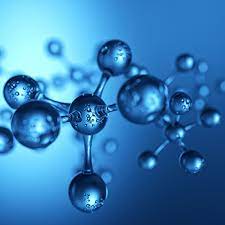TECHNOLOGY FOCUS
One of the most promising suggested applications of quantum computing is solving classically intractable chemistry problems. This may help to answer unresolved questions about phenomena like high temperature superconductivity, solid-state physics, transition metal catalysis, or certain biochemical reactions. In turn, this increased understanding may help us to refine, and perhaps even one day design, new compounds of scientific and industrial importance. Since building a sufficiently large quantum computer may take time, developments that enable these problems to be tackled with fewer quantum resources should be considered very important. Driven by this potential utility, quantum computational chemistry is rapidly emerging as an interdisciplinary field requiring knowledge of quantum computing, network science and computational chemistry.
The course provides a comprehensive introduction to the interdependency of computational chemistry, quantum computing and complex networks sciences, bridging the current knowledge gap. Here we discuss the major developments in this area, with a particular focus on near-term quantum computation. Illustrations of key methods are provided, explicitly demonstrating how to map chemical problems onto a quantum computer and solve them and then extend these results to the problems of complex networks.
In order to cover the broad scope of the research results in this field we start with a survey type of material and some of the key problems and solutions are then revisited in more detail in the following segments of the course.


COURSE CONTENT
.
WHO SHOULD ATTEND
Participants with background in either quantum physics, networks planning, design, deployment and control or networks/internet economics should benefit from participation. This includes researchers, students and professors in academia as well as industry, networks operators, regulators and managers in this field.

Monday
1. INTRODUCTION
Qubit
Entanglement
Quantum Gates and Quantum Computing
Quantum Teleportation and
Quantum Information Theory
Quantum algorithms
Quantum parallelism
2. Quantum COMPUTATIONAL CHEMISTRY
2.1 Classical Computational Chemistry
2.2 Quantum Computational Chemistry Mappings
2.3 Quantum Computational Chemistry Algorithms
2.4 Error Mitigation for Chemistry
2.5 Illustrative Examples (DESIGN EXAMPLES)
2.5.1 Hydrogen
2.5.1.1 STO-3G basis
Tuesday
3. COMPLEXITY OF QUANTUM CHEMISTRY ALGORITHMS
3.1. Arbitrary Basis Quantum Chemistry
3.2 Quantum Computing Molecular Energies
3.2.1 Preliminaries
3.2.2 Classical approaches to quantum chemistry
3.2.3 Unitary coupled cluster
3.2.4 Variational Quantum Eigensolver for UCC
4. Large Scale NETWORKS SYNCHRONIZATION
4.1 Preliminaries
4.2 Oscillator models on complex networks
4.2.1 Phase oscillators
4.3 Onset of synchronization in complex networks
4.4 Evolution of Synchronization Process in Complex Networks
4.5 Stability of synchronized complex networks
4.6 Graph theoretical bounds to synchronizability
4.7 Other Stability Function Formalisms
4.8 Relevance for this Book
4.8.1 Biological systems and neuroscience
4.8.2 Computer science and engineering
Wednesday
5. QUANTUM BIOLOGY
5.1 Quantum Tunnelling and Enzymatic ‐transfer Reactions
5.2 Quantum effects in photosynthesis.
5.2.1 Theory and Experimental Studies
5.2.1.1 Photosynthetic Energy Transfer Theory
5.2.1.2 Energy Flow Control in Photosynthetic Complexes
5.2.2 Bio-Inspired Synthetic Light Harvesting Systems
5.3 The Square Lattice Dimer Model Under Different Boundary Conditions
5.4 Artificial Light Harvesting
5.4.1 Dimerized Ring with Möbius Boundary Condition
5.5 Magnetic Field Effects in Biology
5.5.1 The radical pair mechanism
5.5.2 Interactions
5.5.3 Spin dynamics of radical pairs
2.5.4 Radical Pairs Examples
5.6 Proton Tunnelling in DNA
5.6.1 Preliminaries
5.6.2 The System-Bath Model
5.7 Fluorescent Protein as a Novel Model System for Quantum Biology
5.8 quantum coherence in neuronal ion channels
Ex. I: Diagonalization of Möbius Hamiltonian
Ex. II Light Harvesting by Ring with Periodical Boundary Condition
Ex. III: Equivalence of Present Theory
and Wigner‐Weisskopf Approximation
6 QUANTUM COMPUTING GATES LIBRARIES
Classical Logic Gates Library
Quantum Logic Gates Library
1- Qubit Gates
Controlled Quantum Gates
Selected 2‐Qubit Gates Libraries
Interrelationships Between the Members of 2‐Qubit Gates Library

